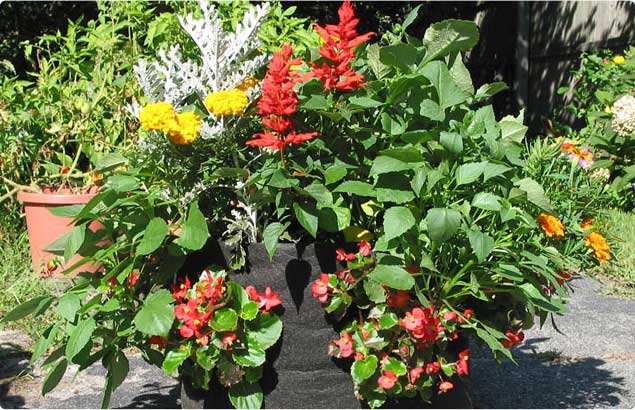Early Vegetables for Spring
Early Vegetables for Spring, Plants to Grow in The Spring
Even when the weather is too chilly to sit in the garden, you can plant a spring garden of early edibles. These are vegetables that can be sown, grown and enjoyed earlier than others.
The earliest of the garden vegetables are hardy enough to keep growing in spite of frosty temperatures. These cold-tolerant vegetables prefer cool daytime temperatures that start at 45 degrees Fahrenheit. They can survive 40-degree days and frosty nights if covered.
The vegetables in this group include radishes, cabbages, lettuce, kale, spinach and peas. All of these cold-loving edibles grow well in Smart Pots, either on their own or in combination with others.
For example, radishes and spinach plants make good growing companions. While radishes are sending down their roots, the spinach leaves are growing up to fill the container. Another benefit of this spring planting is being able to harvest spinach leaves when they’re about an inch tall. Use small scissors to clip leaves from the outside of the plant and let the inner leaves keep growing.
Lettuce is another easy-to-grow spring vegetable crop. It’s simple to broadcast or sprinkle the seeds of loose-leaf lettuce varieties over the top of the container’s potting soil and cover lightly with soil. Keep the soil moist and lettuce can be ready to snip in 60 days or less.
Garlic is a vegetable that’s usually planted in fall; however, spring-planted garlic is another growing option. While plants won’t produce large garlic bulbs, plants can be harvested and eaten like green onions.
To find the earliest vegetable varieties for your containers, look for those with the shortest number of days to maturity, either by planting seeds or transplants. Match similar maturity times for the vegetable combinations you’d like to harvest and cook together.
For best results, plant cold-hardy vegetables about two weeks before the average date of the last frost for your area. Because this date varies, county extension agents and master gardeners can offer advice or consult the Old Farmer’s Almanac as a guide.
Fill Smart Pots with a soil-less potting mix and water to get soil moist, but not soggy. Plant seeds directly in the pot following the instructions on the seed packets. You can also start seeds indoors for transplanting or buy your favorite cool-season transplants from a garden center.
After planting, and when seeds start to sprout, keep soil temperatures on the cool side with some mulch placed around plants. Dry crushed leaves, untreated grass clippings, straw or strips of plain newspaper all make suitable mulches.
As plants grow, be sure to thin root vegetables to leave room between plants. Use these plant thinnings on salads or in soups.
Semi-hardy vegetables include carrots, beets, potatoes and parsnips; cauliflower, Swiss chard, arugula and parsley. Plant these cool-season edibles when daytime temperatures are slightly warmer (50 degrees) and plan on covering them at night with frost blankets, buckets and milk jugs or plant them in a cold frame.







